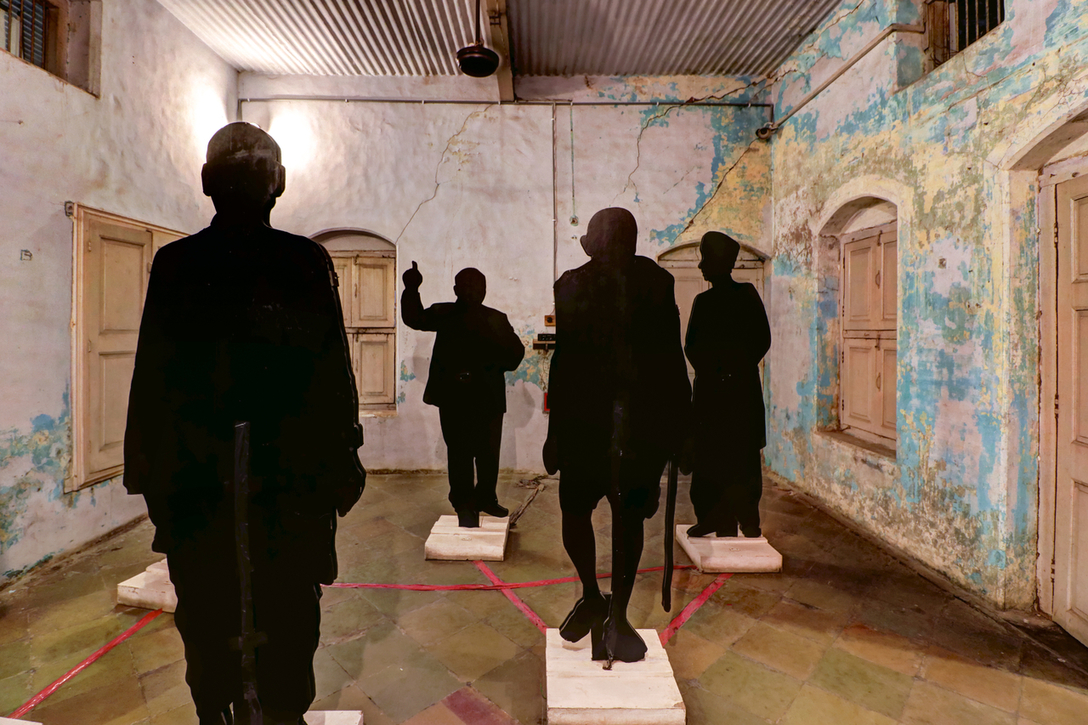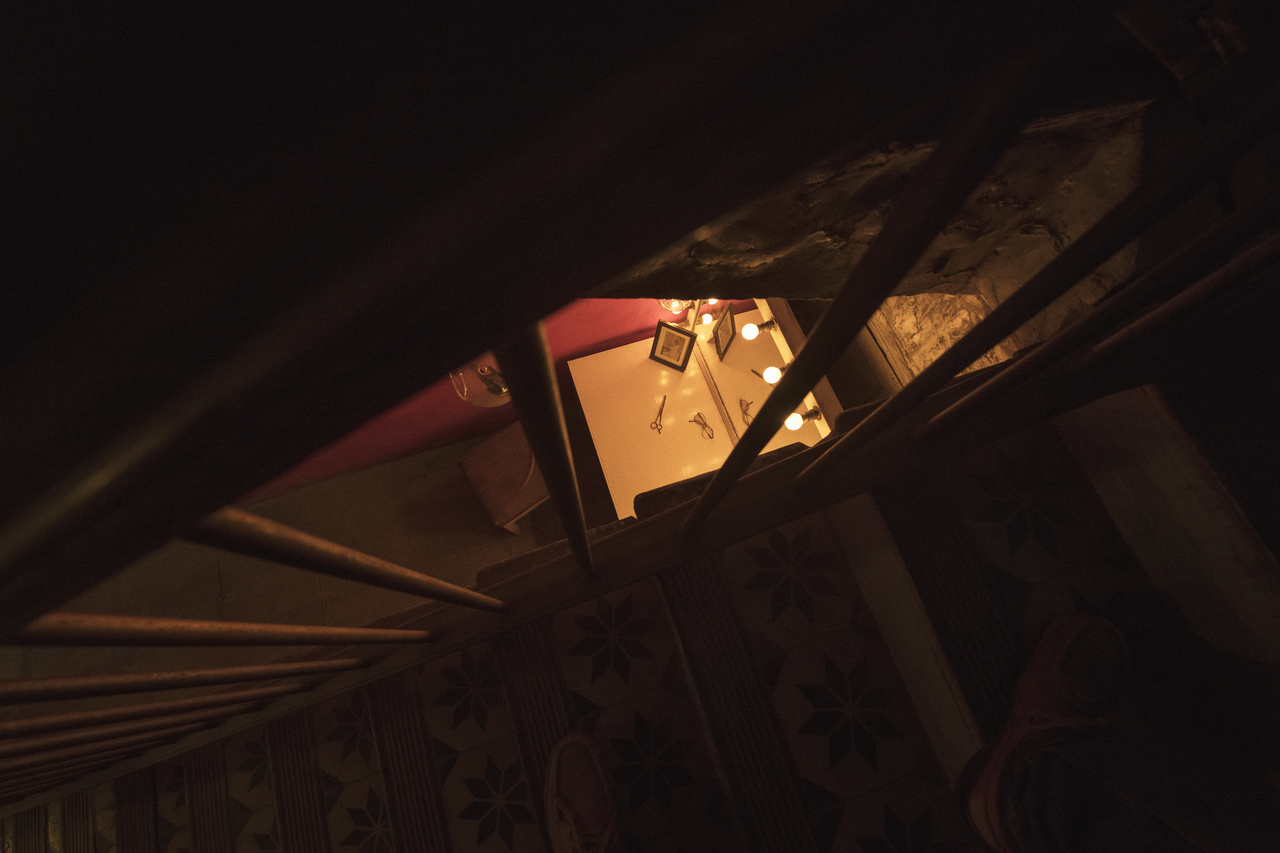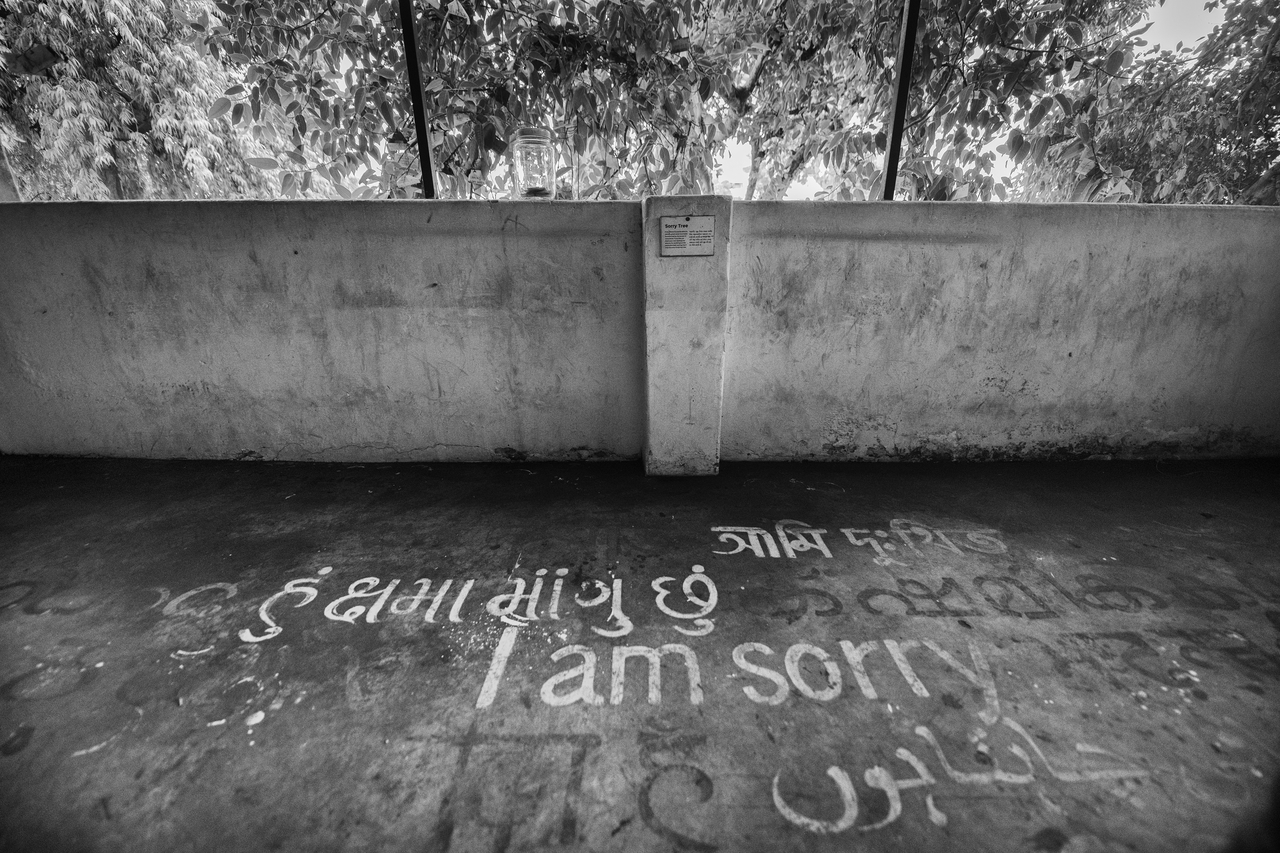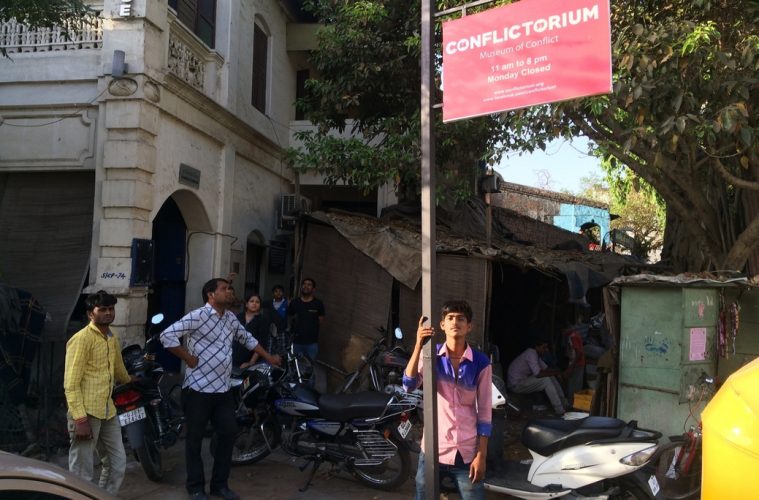Written by Lizzy Vartanian Collier
Copy Edited by Eliza Marks
Photographs: Conflictorium archives
The Conflictorium, a museum in Mirazpur, Ahmedabad, India, is driven to discuss conflict by the collective belief that art has the potential to change society, values and self. It renders the complexities inherent in conflict narratives, embodying the grey spaces and in-betweenness in a black-and-white world that seems so focused on binaries and divisive identity politics. The team at the Conflictorium aims to highlight social change through innovation and creativity, exploring notions of identity through multiple interventions. Its exhibitions, performances, film screenings and workshops engage with history, society, gender and sexuality, and have already been seen and experienced by hundreds of thousands of visitors. My.Kali spoke with the Conflictorium team to ask about its beginnings, how it is run and the role of art and culture in the realm of conflict.
How did the idea to start a Museum of Conflict come about?
A student of interdisciplinary design at Srishti School of Art, Design and Technology, Bangalore, Avni Sethi designed the Conflictorium as her final project. Thus was born her dream project, birthed and nurtured by a collaboration of Janvikas, Centre for Social Justice, and Navsarjan.
The Conflictorium was set up with the vision of informing the city via alternative art and culture, and to initiate dialogue on conflict. The idea was to look at conflict from a perspective different from how it was generally, to look beyond its traumatic history and past. The idea of starting a Museum of Conflict was to be able to celebrate conflict and explore its many hues and shades. The city of Ahmedabad experiences a divide between the old and the new city, the old city being perceived as the trigger for most conflicts. The Conflictorium was started to bridge the gap between the two areas.

The “Empathy Alley” comprises of silhouettes of political figures such as M.K. Gandhi, Dr. B.R. Ambedkar, Jawaharlal Nehru, Mohammed Ali Jinnah, Sardar Vallabhbhai Patel, and Indulal Yagnik. Each figure has a speech in the original voice and the speeches express the ideological thinking of each leader during the time of post-independent India.
Who have you collaborated with so far?
The curatorial practices of the museum are a silent response to the historically exclusive nature of the art world. The last three years of the museum has involved bringing in works of artists from largely marginalised communities (Dalits, Muslims, Tribals, Women etc), which has offered a richer perspective to the frameworks that the museum is engaged with and brought a unique visual perspective to its audiences. Likewise, the team involved in running the space represents this diversity through language, gender, sexual orientation, and identities to address curatorial gaps in the various exhibitions. The productive tensions born from difference are what forms the ethic and energy of the space, and reflects the museum’s larger stance on art practice and collaboration.
The museum acts as a mirror to identities, cultures, politics, past and present through conversation and curation while influencing thought processes and future action, thus providing a medium through which different perspectives and alternate narratives come to light; especially for young researchers, writers, artists and the general public actively seeking such a space.
“Conflict as narrated by everyone is full of differences and disagreements. Sometimes human beings have difficulty acknowledging conflict and acknowledging ourselves as living within a conflict ridden society.”
What role does art and culture have in combatting or raising awareness of conflict? You say it is necessary to accept conflict, why do you say that?
We are motivated by a collective belief that art has the potential to change society, values and the self. Cultural practices have the capacity to impact societies in ways that are foundational. When a society expresses itself creatively, it has the potential to be more humane and less violent. The larger, historical discourse in art practice has often left out various marginalised groups; their voices and their creative impulses. We collaborate with and facilitate artists to produce and showcase critical perspectives, with a focus on highlighting marginalised and dissident voices. The exhibitions, talks and performances curated at the museum have often been in response to contemporary concerns. Curatorial practices have involved articulating a broad political framework that allows for different issues to come to the fore mediated by artists and their distinct methods.
Conflict as narrated by everyone is full of differences and disagreements. Sometimes human beings have difficulty acknowledging conflict and acknowledging ourselves as living within a conflict ridden society. It is the way we learn to accept and negotiate with conflict that is important. It is the acceptance of conflict that gives us the power to rethink and reimagine the society that we live in and it is also that acceptance that gives us the power to express ourselves and resolve these conflicts.

‘Power of the New’ A sound installation by Avni Sethi, “In This House and That World” introduces the layered history of the building and locates the audience-participant within this continuum.
How do you engage with your audience?
Ahmedabad city has been wrought with conflict, and the past decade has seen an overwhelming segregation based on religious, caste1 and economic identities. A culture of silence and passivity are the predominant attitudes towards the rising violence in our country. Our existence in the older part of the city (ghettos) pulls in an audience that would otherwise never interact with this part of the city or its people. Moreover, at the museum we try to engage with the community of Mirzapur (especially youth) through workshops, performances and film screenings relevant to their life and context. With this, we facilitate participation where none was possible at the outset, merely because of access. Through art practice and active participation of the neighbourhood in the process of culture making, we re-imagine the concept of ‘museums’, making this space at once participatory and democratic in its existence and outreach.
How have visitors responded?
The intended audience at the Conflictorium is young adults between the ages of 15 – 35 years. The audiences at the museum are young people from all walks of life, different social and cultural backgrounds who bring their opinions, personality, views and politics to the space. People belonging to different castes, religions and economic identities come together and participate in dialogues around the topic of conflict. The Conflictorium has also provided a medium for young performers and practitioners to shed light on different perspectives and alternate narratives around topics of conflict. These works have offered a richer perspective to the frameworks that the museum is engaged with and have brought a completely original visual perspective to its audiences.

The peepal tree outside the Conflictorium has been made the “Sorry Tree”, where visitors are reinforced the importance of one word of apology and the weight it often carries when left unexpressed.
During a time where gender based violence (GBV) is being reported widely in the news, how does the Conflictorium combat this?
The Conflictorium has been able to start a conversation and create dialogue around topics ranging from displacement, Muslim identity, Dalit identity2, gender, women empowerment, caste, class, right to freedom of speech and expression to sexuality which encourages the youth to question their dominant narratives and address complex questions regarding these topics. The Conflictorium was successful in helping the audience form their own informed opinion after looking at both sides of the coin rather than following the dominant narrative. This is evident from the questions that are asked during the events as well as the informal conversations that continue after wherein you can see the youth questioning the topic in consideration and indulging in debates and discussions regarding the same. Conflictorium along with the permanent exhibits of the museum open up an environment of healthy, non-violent dialogue through art practice so that different groups can find a mediated way to deal with their differences.
What are the Conflictorium’s plans for the future?
Again, culture practices have the capacity to impact societies in ways that are positive and foundational.The larger, historical discourse in art practice has often left out various marginalised groups; their voices and their creative impulse. We want to therefore continue working on strengthening our identity as a physical space working through art and culture on socially relevant issues.
We wish to continue strengthening our relationship with the community of Mirzapur and hosting workshops and artists that can create accessible and engaging spaces for the community. The idea in particular is to create performances or curate exhibitions that bring in diverse voices from various communities and to become a hub for art, culture and its intersection with social justice, especially for the youth.
We are also currently working on building partnerships with other such organizations/persons to set up similar spaces like the Conflictorium across the country. We want to work on the concept of a travelling museum to help take the idea of a museum to different spaces across the country without expecting everyone to be able to access it in its present location. And finally, we want to continue expanding our reach in Ahmedabad and are currently working on establishing a reading room as well as a cafe in the present space.

